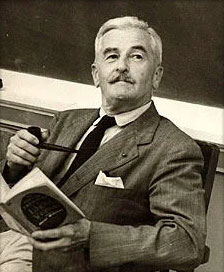Reception
When it was first published in 1932, the novel was moderately successful; 11,000 copies were initially printed, with a total of four printings by the end of the year, although a significant number of copies from the fourth printing had not been sold by 1936. In 1935, Maurice-Edgar Coindreau translated the novel into French. In the same year, it was translated into German along with several other of Faulkner’s novels and short stories.
These works initially met with approval from the Nazi censors and received much attention from German literary critics, because they assumed that Faulkner was a conservative agrarian positively depicting the struggle for racial purity; soon after, however, Faulkner’s works were banned by the Nazis, and post-war German criticism reappraised him as an optimistic Christian humanist. Faulkner’s books were not available in Germany until 1951 because US army censors also did not approve of his work.
According to Michael Millgate, though it is not typically considered Faulkner’s best novel, Light in August was recognized early on as being “a major text, central to any understanding or evaluation of his career as a whole.” He argues that many of the early American critics, most of whom were urban Northerners who viewed the South as backward and reactionary, focused on Faulkner’s technical innovation in the field of narrative but missed or ignored the regional details and interconnectedness of the characters and setting to other works by the author.
Some reviewers saw Faulkner’s narrative techniques not as innovations but as errors, offering Faulkner recommendations on how to improve his style and admonishing him for his European modernist “tricks”. Critics were also displeased with the violence depicted in the novel, pejoratively labeling it “gothic fantasy,” despite the fact that lynching was a reality in the South. In spite of these complaints, the novel came to be viewed positively because of its violence and dark themes, as this was a contrast to the sentimental, romantic Southern literature of the time.
Time magazine included the novel in its TIME 100 Best English-language Novels from 1923 to 2005.
